By Jon Diamond
Key Allied victories in the Pacific have been singled out as seminal turning points against the Japanese. The American Navy’s sinking of four enemy carriers at Midway crippled future Imperial Japanese Navy (IJN) initiatives on the scale mounted during the war’s initial six months.
The six-month-long, grueling Japanese defense and ultimate conquest of Guadalcanal by American land, sea, and air forces—after the initial Marine amphibious invasion of that southern Solomon island on August 7, 1942—halted the Japanese southeastward strategic advance to sever the sea lanes to the Antipodes.
What has been ignored, however, is the backbreaking series of defeats that the Japanese suffered in their attempts to defend New Georgia, Kolombangara, and Bougainville in the Central and Northern Solomons. The losses of Imperial Japanese Army (IJA) units, IJN ships, and aircraft and crews could never be replaced after the defeats suffered on these hellacious jungle islands, especially given the requisite presence of Imperial forces on the Central Pacific and New Guinea fronts.
Major General Allen H. Turnage, commanding the 3rd Marine Division, which had invaded Bougainville in November 1943, wrote, “Never had men in the Marine Corps had to fight and maintain themselves over such difficult terrain as was encountered on Bougainville.”
Major General Alexander A. Vandegrift, who commanded the 1st Marine Division on Guadalcanal and then the I Marine Amphibious Corps (IMAC) for the Bougainville landings, commented that the Bougainville “jungle [was] worse than we had found on Guadalcanal.”
Stanley Frankel, the U.S. Army’s 37th Infantry Division historian, wrote about the Japanese counteroffensive against the U.S. Army’s XIV Corps perimeter at Cape Torokina on Bougainville in March 1944: “The curtain was about to rise on one of the bloodiest, most fanatical Banzai attacks made by the Japanese in the South Pacific War … against a civilian army of battling clerks, farmers, mechanics, schoolboys, business men.”
Another Marine veteran of Guam and Iwo Jima recounted, “Of all the 28 months I spent overseas, nothing compared to Bougainville for miserable living conditions…. Bougainville had to be the closest thing to a living hell that I ever saw in my life.”
The Pacific campaigns before and after Bougainville—Guadalcanal, Tarawa, the Marshall Islands, Saipan, Guam, Peleliu, Iwo Jima, and Okinawa—seemed to be much more “headline-grabbing” amphibious operations than the largely forgotten six-month long Marine and Army efforts at Cape Torokina on Empress Augusta Bay.
Possible explanations for Bougainville being overshadowed stem from a paradigm shift in Allied strategy in the South Pacific. After the war, a Japanese intelligence officer admitted that, after the bloody frontal assaults along Papua’s northern coast at Buna during late 1942 into early 1943, the Americans had begun to display a new strategic initiative to invade Japanese-held areas where they were the least defended.
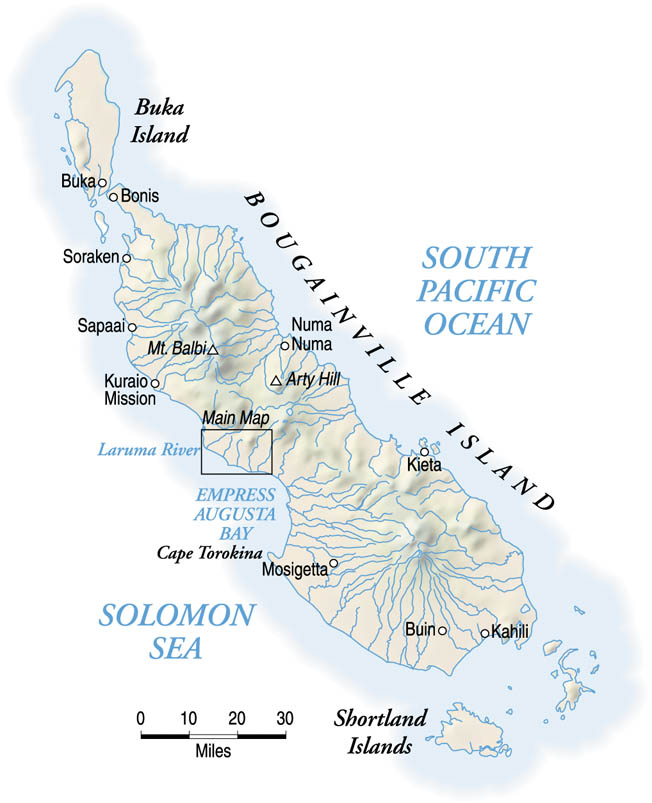
on Bougainville made it a strategically important objective for the United States, which landed
two Army and Marine divisions at Empress
Augusta Bay in November 1943.
The officer said, “This was the type of strategy we hated most. The Americans, with minimum losses, attacked and seized a relatively weak area, constructed airfields, and then proceeded to cut the supply lines to troops in that area. Without engaging in a large-scale operation, our strongpoints were gradually starved out. [The] Americans flowed into our weaker points and submerged us, just as water seeks the weakest entry to sink a ship.”
Historian Stephen Taafe summed up this emerging strategy as “cutting off and isolating their strong points and, in effect, transforming them into vast jungle prison camps.”
In May 1942, before the fighting for Papua commenced, General Douglas MacArthur, the commander-in-chief of the Southwest Pacific Area (SWPA), had rashly boasted that, given three infantry divisions and two aircraft carriers, he could capture the Japanese bastion of Rabaul on the northeastern tip of the island of New Britain in the Bismarck Archipelago. The Joint Chiefs of Staff (JCS) prudently shelved this bombastic notion. In early June 1943, the JCS completed a survey, which concluded just the opposite. A direct invasion of New Britain would be too costly. Rabaul should be neutralized instead.
The next month, General George C. Marshall, the U.S. Army Chief of Staff, communicated to MacArthur that with the SWPA commander capturing Wewak on the northeast New Guinea coast and Manus in the Admiralty Islands group along with Admiral WIlliam F. “Bull” Halsey’s South Pacific Force’s eventual seizure of Kavieng on New Ireland to the north of Rabaul he believed that Rabaul could be encircled and effectively neutralized using U.S. air power.
When MacArthur persisted with his urging that Rabaul be directly invaded, Allied planners at the Quebec Conference of the Combined Chiefs of Staff in August 1943 were adamant and formalized the strategy codenamed Operation Cartwheel to neutralize Rabaul.
Rabaul was the headquarters and main supply base for both the Japanese Southeastern Army and the Southeastern Fleet and lay directly northwest of Bougainville. Air units based at Rabaul were the responsibility of the Eleventh Air Fleet. Despite extensive losses, the IJN continued to reinforce its air units with approximately 50 planes a month flown in from Truk in the Caroline Islands.
In all of New Britain, the IJA could muster more than 97,000 men. To defend the region around Rabaul in November 1943, the IJA had more than 76,000 men. There were four natural harbors there, with Simpson Harbor and its excellent docking facilities capable of handling 300,000 tons of shipping.
As Admiral Samuel Morison commented, “Tarawa, Iwo Jima, and Okinawa would have faded to pale pink in comparison with the blood that would have flowed if the Allies had attempted an assault on Fortress Rabaul.”
The Solomon Island chain is more than 500 miles long. Bougainville is one of the most northern islands in the chain, as well as the largest, 130 miles long and 30 miles wide. Bougainville’s strategic importance lay with its location just over 200 air miles from Rabaul.
Topographically, Bougainville possessed two central mountain ranges, the Emperor Range in the north and the lower, less rugged one to the south, the Crown Prince Range, with the former having two active volcanoes—Mount Balbi at over 10,000 feet and Mount Bagana. Except for some roads in the south that could accommodate wheeled transport, overland movement was limited to primitive trails through the dense jungle interior.
Most important of the island routes were the Numa Numa Trail, which extended southwest from Numa Numa on the northeast coast to Empress Augusta Bay, and the East-West Trail running northwest from Buin on the southern tip to Gazelle Harbor below Empress Augusta Bay.
The invasion of Bougainville, along with construction of airfields there, would be a major part of Operation Cartwheel. Bougainville was to be assaulted in the final phase of the bloody campaign up the Solomon Island chain. However, due to Bougainville’s proximity to Rabaul, it was heavily garrisoned by the Japanese.
Bougainville was headquarters for the Japanese Northern Solomons Defense Force with its main base at Buin located on the southeastern tip of the island, across from which were the Shortland Islands, Faisi, and Ballale. The IJA 17th Army Headquarters and the IJA 6th Division, the latter having achieved notoriety for atrocities committed in China, had 15,000 men around Buin airfield on the island’s southern tip.
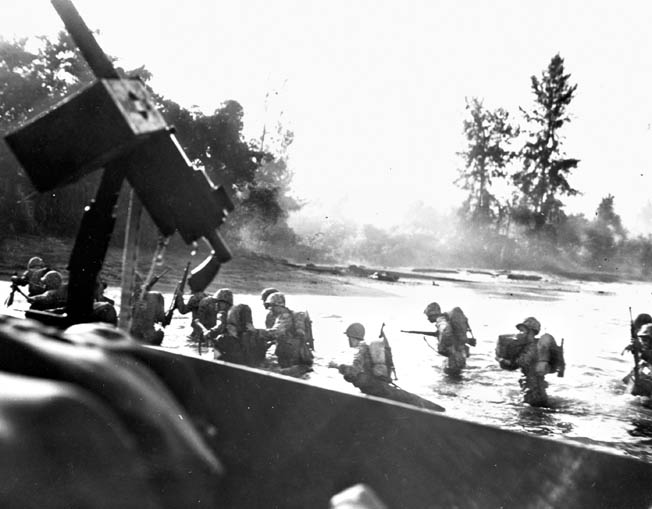
There were other airfields in the south, including Kahili, Kieta, and Kara. The IJN’s Eighth Fleet had several hundred more men on Bougainville, and there were more than 10,000 Japanese troops and naval coast artillery in the Shortland Islands and nearby Ballale Island, with its airfield being an IJN operation. In the extreme northwest of the island abutting Buka passage was an airfield at Bonis.
Additionally, at the Buka airbase just to the north of Bougainville the IJA had garrisoned 5,000 men while the IJN stationed 1,000 sailors at a seaplane base. At Empress Augusta Bay on the island’s western side the IJA had stationed only a small infantry garrison.
After 15 months of Japanese occupation, Bougainville’s native Melanesian population was thoroughly pro-Japanese. The Allies were unable to ascertain current intelligence about Japanese movements because many of the coast watchers had been captured, and those still at large were unable to move around the island safely. By July 1943, all of the remaining Allied coastwatchers were evacuated from Bougainville.
The Japanese knew that a battle for Bougainville was going to be more crucial than the previous losing struggle for Guadalcanal. Also, the Japanese still retained a distinct advantage in the Solomons. Even though they had lost Guadalcanal their fighter aircraft had longer range than American planes.
Additionally, Combined Fleet Admiral Isoruku Yamamoto had been continually building up his airfields in the Northern Solomons as staging areas, as well as at Vila on Kolombangara and at Munda on New Georgia. Japanese planes could be dispatched from Rabaul to New Georgia, where they could refuel and then go on to attack the American bases at Tulagi and Guadalcanal and return the same way with emergency airfields available for damaged planes to conserve the diminishing number of skilled pilots, many of whom had been lost in air combat over Guadalcanal.
The American planes, especially the fighters, did not have the range to reach Rabaul and return to U.S. bases. Recognizing this logistical advantage, Yamamoto intended to reinvigorate his air attacks on Guadalcanal from bases on Rabaul after the Japanese evacuation from Guadalcanal in early February 1943.
Yamamoto sorely wanted to regain the strategic initiative and, perhaps, win one additional major victory since the lightning campaign of 1941-1942. Such a decisive Japanese victory might yet compel the Allies to seek a negotiated peace and allow the Japanese to keep their new Pacific empire.
Ironically, on April 18, 1943, during a morale-boosting trip to the Northern Solomons, Yamamoto’s personal, twin-engined, Mitsubishi G4M “Betty” bomber was shot down by Guadalcanal-based American Lockheed P-38 Lightning fighters over the southern tip of Bougainville. Admiral Mineichi Koga took over the Combined Fleet after Yamamoto’s death.
Halsey continued his Central Solomons campaign with a landing on New Georgia on June 30, 1943, but the capture of Munda airfield took until August 5 and precipitated the evacuation of many Japanese units to Kolombangara three days later. The final cleanup of New Georgia lasted until August 27.
Originally Halsey’s plan called for the attack against Munda to be followed by the seizure of Vila airfield on Kolombangara, but the Japanese were correctly believed to be established on that island in considerable strength, with estimates of a garrison of nearly 10,000 troops. Halsey did not want another protracted campaign to capture Vila.
The American admiral stated, “The undue length of the Munda operation and our casualties made me wary of another slugging match, but I didn’t know how to avoid it.”
His staff came up with a new route to Bougainville bypassing Kolombangara and landing at Vella Lavella, the northernmost island in the New Georgia group. On August 15, the U.S Army’s 35th Regimental Combat Team landed on Vella Lavella. The 14th New Zealand Brigade arrived the following month to complete the occupation by September 24.
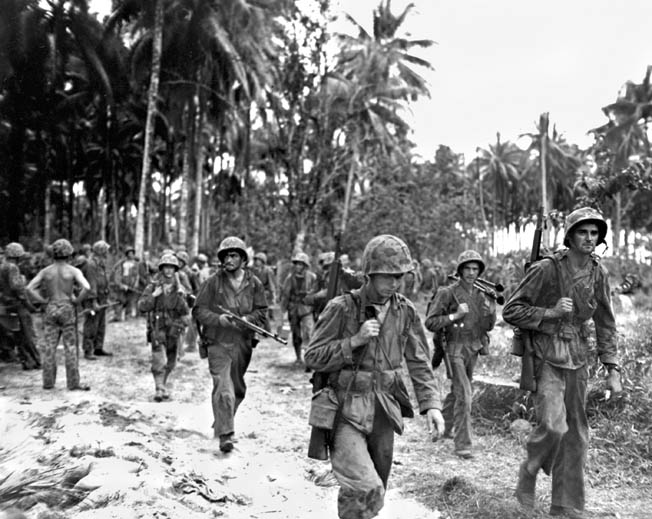
Although there was never any substantial ground combat on Vella Lavella because Japanese ground forces were both limited and in the process of withdrawing, the real struggle for Vella Lavella occurred with naval surface action and incessant aerial attacks on American shipping, which included more than 100 hundred enemy air attacks from August 15 to September 3, 1943.
The loss of New Georgia and the bypassing of Kolombangara somehow produced a reversal of the defeatism the Japanese suffered after the loss of Guadalcanal and Papua during the early winter months of 1943. On September 30, 1943, Imperial Headquarters instructed local Japanese commanders to hold the southeastern front as long as possible. Orders came from Tokyo that indicated that Rabaul had to remain the center of this defense line.
Bougainville was to become the staging area for renewed attacks to the south and east. As the troops from Kolombangara and the other Central Solomon islands were brought back to safer Japanese areas, they were concentrated on Bougainville. After the loss of Guadalcanal and New Georgia and the evacuation of Kolombangara, Bougainville was deemed the best option to accomplish the two goals of protecting Rabaul and serving as an eventual springboard to strike southeastward again.
Also, the continued possession of Bougainville was to provide the leaders in Tokyo the necessary time for the IJA to supply and execute land offensives in China and through Burma’s western boundary into India. Victories in these operations might derail Allied war plans in the Pacific Theater.
American tactical planning for the Bougainville assault began in July 1943, when Halsey assigned the I Amphibious Corps Headquarters, under U.S. Marine Maj. Gen. Alexander Vandegrift (after the unexpected death in a freak fall of Maj. Gen. Charles Barrett) to command the ground forces.
MacArthur wanted Halsey’s aircraft established within fighter range of Rabaul in time to assist with the neutralization of that major Japanese base as well as to cover the SWPA’s invasion of Cape Gloucester on the southern end of New Britain, which was planned between December 25, 1943, and January 1, 1944.
MacArthur deemed it strategically necessary for Halsey’s South Pacific forces to establish themselves on the mainland of Bougainville on November 1, 1943. MacArthur placed the tactical location for Bougainville’s invasion squarely in Halsey’s hands. The Americans realized that the IJA forces on Bougainville were far more formidable than on Guadalcanal, and this produced a change in Halsey’s plans for the move northward, even as the fighting was continuing on New Georgia in the Central Solomons.
Admiral Halsey and his South Pacific Force staff’s strategic outlook and tactical planning had to evolve to establish a beachhead on Bougainville without a bloodbath. Largely due to the combat exhaustion of the U.S. Army’s 25th Infantry Division on New Georgia and the commitment of the 2nd Marine Division to Nimitz’s Central Pacific offensive, Halsey’s South Pacific Force was left with only the unblooded 3rd Marine Division and the Army’s 37th Infantry Division, the latter largely an Ohio National Guard unit that had also seen action on New Georgia.
Halsey’s requirement for a beachhead was to assault a lightly defended area to avoid heavy casualties. Then he needed to possess enough territory to quickly establish a strong perimeter to protect the construction of a coastal fighter airfield since continuous carrier-based air cover would not be available indefinitely to maintain an umbrella over the invasion site. As soon as possible a fighter and medium bomber strip would be built farther inland within a well-defended American perimeter for aircraft there to participate in Operation Cartwheel. The Kieta area on Bougainville’s east coast had the requisite flat plains for airfields as well as good harbors for Allied transports.
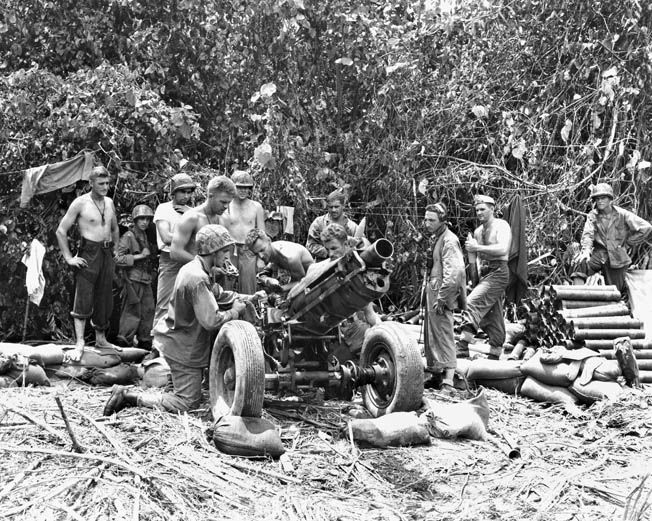
However, this locale was near Japanese-occupied Choiseul, which meant that this large Solomon island, too, would have to be secured in advance. Disadvantages to other beaches on Bougainville’s east coast were their proximity to strong Japanese garrisons concentrated on the island’s southern tip at Buin and the poor soil composition for airfield construction.
An alternative site was Cape Torokina in Empress Augusta Bay on Bougainville’s west coast. It was closer to Rabaul than Kieta, and its approach was unimpeded by adjacent enemy-held islands or strong garrisons. A five-mile strip of beach there was deemed suitable for a landing with nearby soil conditions favorable for building airfields.
Given the primitive jungle trails and the harsh mountainous terrain of the Emperor and Crown Prince mountain ranges, the Cape Torokina area was almost isolated from the strong Japanese garrisons in northern and southern Bougainville. Halsey’s staff calculated that it would take the Japanese three to four months to bring enough heavy artillery over the mountains to launch counterattacks once the American invasion force was ashore at Empress Augusta Bay.
On the down side, the bay’s inshore waters were poorly charted and treacherous, with the five-mile strip of beach largely unprotected from monsoons. Also, the coastline was swampy while the anchorage was unsuitable for large vessels. Finally, the Torokina area was no farther than 65 miles from any of the Japanese air bases on Bougainville and only 215 miles from Rabaul’s airdromes to the northwest.
The staff of the IJA’s 17th Army had evaluated the beach areas on Bougainville as potential landing sites for an Allied amphibious invasion and regarded the Cape Torokina locale at Empress Augusta Bay as most unlikely.
Japanese commanders stationed only one company of 270 men from the 2nd Battalion, 23rd IJA Infantry Regiment (Colonel Hamanoue, regimental commander) with a single 75mm artillery piece there as an outpost.
Lieutenant General Masatane Kanda, commander of the IJA 6th Infantry Division on Bougainville, believed that the Allies would land southeast of Cape Torokina where he had about 2,500 troops. General Hitoshi Imamura, stationed at Rabaul, believed that if Halsey were to land at Cape Torokina it would be only a short-lived amphibious assault.
Imamura believed that the Buka Island area, just north of Bougainville, was the main invasion site for Halsey’s South Pacific Force and reinforced Bougainville’s northern tip rather than committing his substantial number of troops to the western coast. Later, despite the South Pacific Force’s continued presence at Cape Torokina after Halsey’s invasion there, Imamura inexplicably continued to build up the defenses at Buin.
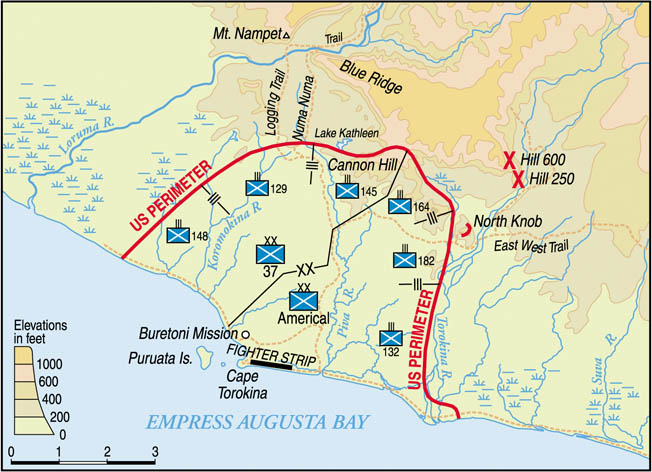
On September 22, 1943, Halsey canceled all his earlier invasion plans and assigned the units to constitute Bougainville’s invasion force. The 14,000 men of the newly formed 3rd Marine Division, reinforced by the 2nd and 3rd Raider Battalions and the 3rd Defense Battalion, would lead the assault at Empress Augusta Bay.
In sharp contrast to the assault on New Georgia in the Central Solomons, Halsey would send his troops ashore at the weakly held Cape Torokina, despite having beach and terrain conditions that the admiral pronounced as “worse than anything ever encountered in the South Pacific.”
Halsey informed MacArthur of his landing site at Cape Torokina on October 1 with an invasion via Empress Augusta Bay set for November 1.
On October 27, 1943, Choiseul, southeast of Bougainville and north of Vella Lavella, was attacked by the 2nd Parachute Battalion of the 1st Marine Parachute Regiment, commanded by Lt. Col. Victor H. Krulak, as a feint to confuse the Japanese about Halsey’s real intention.
The Treasury Islands, lying directly south of both Bougainville and the Shortland Islands, would also need to be occupied by Halsey’s South Pacific Force to serve as advance bases for small craft, including PT boats.
The Treasuries were defended by only a few hundred Japanese, and they were invaded by roughly 4,000 men of the 8th New Zealand Brigade Group on October 27. However, the Allied commanders knew that the Japanese had about 25,000 troops stationed in the Buin-Shortland Islands area at the southern end of Bougainville with the necessary barges to transport reinforcements to the Treasuries, so surprise and the coincident raid on Choiseul would be vital to keeping the Japanese defenders confused as to where to commit their reserves.
The Treasury Islands were successfully occupied by the Allies by the end of the invasion’s first day, with the small Japanese garrison being pushed into the jungle. By now having the Treasury Islands along with previously occupied Vella Lavella, Halsey would have the advance bases to support his Bougainville invasion and airfield construction, avoiding the supply crisis that he had experienced on Guadalcanal.
The first American planes landed at Vella Lavella on September 24, providing Halsey with another nearby airstrip to support his Torokina beachhead. By mid-October, the American airfield on Vella Lavella could accommodate almost 100 aircraft.
The Japanese high command in Tokyo remained puzzled by these Allied diversions, but the island assaults seemed to be producing the desired effect for Halsey’s staff, since Admiral Koga did not take any decisive action and remained highly suspicious of an immediate invasion of New Britain—more so than Bougainville.
According to Marine General Roy Geiger, who would take over the IMAC leadership from Vandegrift on Bougainville on November 9, the Treasury Islands occupation and the Choiseul raid were important preliminary operations to landing on Bougainville’s western coast, serving as “a series of short right jabs to throw the enemy off balance and to conceal the real power of our left hook to his belly at Empress Augusta Bay.”
Rear Admiral Theodore S. Wilkinson was named Commander, Bougainville Amphibious Force, Task Force 31. Along with Vandegrift—and then Geiger—serving as Commanding General, IMAC, these experienced leaders would help overcome the intelligence deficiencies that faced the 3rd Marine Division (Reinforced), under Maj. Gen. Allen Turnage.
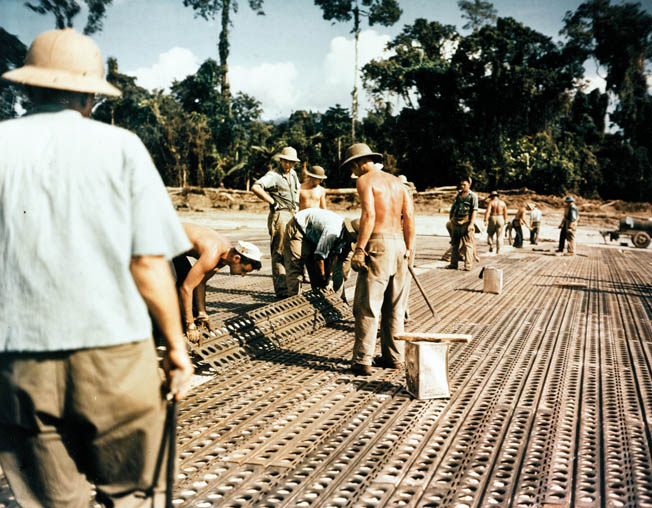
According to the division’s history, “Virtually nothing was known of the hydrography, terrain conditions inland from selected beaches, and location of enemy defenses in the immediate area,” largely due to the delayed selection of the Cape Torokina amphibious landing site.
Although Vandegrift had obtained the requisite transport to land his 14,000 Marines, he was still anxious that there might be more than the 300 Japanese troops that were suspected to be in the area.
Followup convoys, after the initial landings at Torokina on November 1, 1943, would deliver additional supplies as well as the 21st Marines, the 1st Marine Parachute Regiment, and the 37th Infantry Division, the latter under the command of Maj. Gen. Robert S. Beightler, comprising the 129th, 145th, and 148th Infantry Regiments.
Vandegrift’s anxiety was soon dispelled as his earlier intelligence estimates were confirmed that only one company of the IJA 23rd Infantry Regiment of Maj. Masatane Kanda’s 6th Division would be defending the landing site. However, imbued with Tokyo’s wishes to defend every spot tenaciously now, the opposition, although light, would mount a strong defense at Torokina.
A preliminary naval bombardment of Cape Torokina and strafing of the landing beaches by Navy dive bombers from Munda, New Georgia, began at 6 am on November 1, but drew no Japanese response.
Then, assault waves of 3rd Division Marines—the 9th Marines on the left and the 3rd Marines on the right—crossed their narrow beaches of only 30-50 yards in depth to enter Bougainville’s adjacent dense jungle. The 2nd Raider Battalion was situated between battalions of the 3rd Marine Regiment close to Cape Torokina.
Elements of the 3rd Raider Battalion seized Puruata Island, which was situated in Empress Augusta Bay to the northwest of Cape Torokina and adjacent to tiny Torokina Island in the bay to the east. The landing beaches were roughly 8,000 yards long and extended from Cape Torokina to just west of the Koromokina Lagoon, which was fed by a similarly named river.
Although the Marines did not encounter strong Japanese forces, heavy surf as well as a high beach mitigated proper anchoring of many of the 9th Marines’ landing craft on the western, or left flank, beaches, forcing many Marines to wade ashore in deep water to the far left of their assigned assault beaches.
With more than 80 LCVPs (Landing Craft Vehicle, Personnel) and LCMs (Landing Craft, Mechanized) disabled, Vandegrift, the IMAC commander, halted further landings along the 9th Marine beaches.
However, to the far right of the assault beaches the 1st Battalion, 3rd Marines ran into at least 25 entrenched Japanese positions on Cape Torokina, which were only minimally damaged by the preceding naval bombardment.
A 75mm artillery piece, protected by pillboxes and infantry rifle pits on the northern face of the cape enfiladed the amphibious assault of the 1st Battalion, 3rd Marines and the 2nd Raider Battalion at a range of only 500 yards.
This entrenched 75mm gun hit 14 landing craft, of which four sank, and disrupted the proper landing sites of the battalions’ companies and headquarters. The 2nd and 3rd Battalions, 3rd Marines made easier landings on their beaches since there were no Japanese fortifications; the few enemy troops there fled into the jungle after only token resistance.
Sergeant Robert A. Owens, observing the devastating effect that the 75mm gun was having on the beach and approaching landing craft, along with his squad from A Company, 1st Battalion, 3rd Marines, attacked the gun position situated in a palm log bunker reinforced with sand-filled fuel drums.
Although other members of his squad at the base of the hill above the landing area were being felled by sniper fire, Owens, with four men in support, ran uphill to storm the bunker singlehandedly, despite being hit by Japanese snipers. After reaching the bunker’s gun port, Owens crawled through the aperture firing his Thompson submachine gun, killing several of the artillery crew. Escaping enemy troops exiting through the rear of the bunker were killed by other Marines.
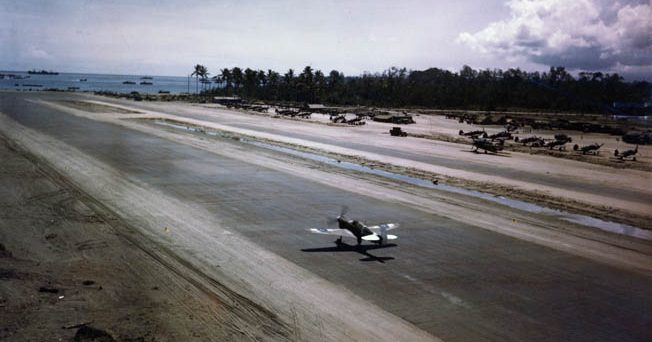
When Owens, too, emerged from the bunker, he collapsed and died from his wounds. The bunker had an abundance of high-explosive ammunition that would have been fired at the beach and landing craft had Owens not wiped out most of the crew. Owens received the Medal of Honor posthumously for his bravery and sacrifice.
The other pillboxes were all destroyed by the afternoon by similar assaults that enabled other Marines to either force hand grenades down the ventilation shafts or take the structures from the rear. In the communicating trenches between the pillboxes, Marines resorted to hand-to-hand combat with the Japanese 23rd Infantry Regiment defenders.
More than half the 270 Japanese infantrymen from this regiment eventually fled into the jungle. The Marines suffered 180 killed and wounded. Puruata and Torokina Islands were taken by the 3rd Raider Battalion with minimal casualties. A few additional days were needed to root out snipers.
The battle for the narrow beachhead had ended, but combat along the jungle perimeter now began with G Company, 9th Marines situated well to the south of the Laruma River to oppose an enemy movement from the north while M Company, 3rd Raider Battalion, attached to the 2nd Raider Battalion for the main landing, took up positions on the Mission Trail should the Japanese approach from the south.
Japanese air attacks from Rabaul commenced immediately after the landings started, which briefly suspended operations, as American fighters from Vella Lavella and Munda engaged the Aichi D3A Val dive bombers and Mitsubishi A6M Zero fighter escorts numbering about 120 planes that day.
By the time November 1 ended, the 75mm and 105mm howitzers of the 12th Marines were hauled through Bougainville’s muck into the perimeter, while the 90mm antiaircraft guns of the 3rd Marine Defense Battalion dug in and gave the 14,000 Marines ashore some added firepower. Within days, U.S. Navy “Seabees” began constructing rudimentary roadways and started work on a fighter strip at Cape Torokina. The shooting stopped.
Within a week, Marine patrolling could find no significant Japanese formations within two miles of the temporary perimeter; the positions of the 3rd and 9th Marines were reversed by General Turnage. The Raiders from Puruata and Torokina Islands were held in reserve except for one company placed at a roadblock along the Piva Trail.
Elements of the 21st Marines arrived in the perimeter on November 6, while the 148th Infantry Regiment, 37th Division landed on November 9. Within two weeks, the 37th Division’s artillery along with its 129th and 145th Regiments would also land.
The Japanese had been confused about the site of Bougainville’s invasion and also underestimated the strength of the lodgement, as they had previously done at Guadalcanal. The IJA 17th Army Headquarters, led by bespectacled Lt. Gen. Harukichi Hyakutake, had given up the defensive initiative at Torokina, believing that the major American landing would still occur at Buka in the north or Buin on the island’s southern tip.
Hyakutake received elements of the 17th IJA Division’s 53rd and 54th Infantry Regiments from Rabaul, which landed on Bougainville on November 7, to engage the left of the Marine perimeter to force commitment of Marine reserves while the stronger attack from Buin would be hurled at the Piva Trail roadblock on the right of the perimeter.
The Japanese landings were scattered by the heavy surf to the north of the perimeter. Rather than waiting to consolidate their forces, the Japanese chose to immediately attack K Company, 3rd Battalion, 9th Marines near the Laruma River. This company, in turn, was ordered to counterattack through deep swamp, which compelled the enemy to go on the defensive just west of the Koromokina River.
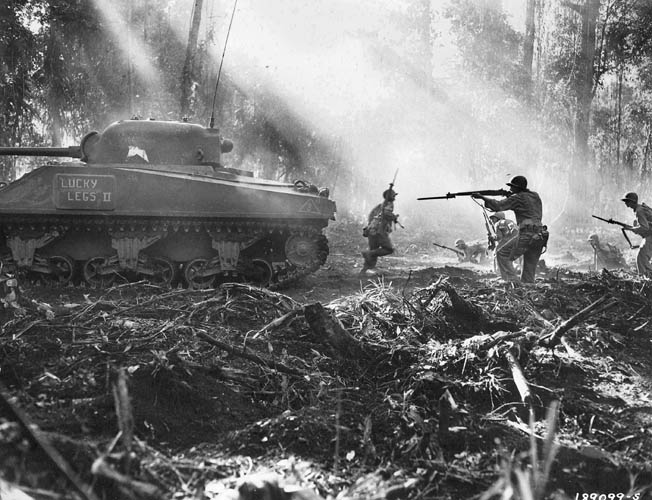
The attacking K Company Marines had exhausted themselves trying to oust the Japanese from their impromptu defensive positions and were relieved by company-sized elements of the 1st Battalion, 3rd Marines supported by tanks and 37mm antitank pieces, which destroyed some of the enemy emplacements.
The next day, November 8, commenced with an attack by the 1st Battalion, 21st Marines supported by the 12th Marines artillery and a combined mortar and tank attack by the 1st Battalion, 3rd Marines. Only limited Japanese opposition was encountered, and American airstrikes near the Laruma River’s mouth added to about 300 enemy killed during the Battle of the Koromokina, while the Marines suffered more than 45 killed and wounded.
A Japanese thrust had also been anticipated from the south in the vicinity of the Piva Trail, where elements of the 2nd Raider Battalion blocked the track.
Battalion-sized formations of the IJA 23rd Infantry Regiment, 6th Division from Buin attacked on November 7-8. Led by Maj. Gen. Shun Iwasa, a Japanese frontal attack was launched but was halted by the Marine Raiders supported by the mortarmen of the 9th Marines.
General Turnage, still in need of expanding his perimeter to the south, sent in the 3rd Raider Battalion along both the Piva and Numa Numa Trails on the morning of November 9. A stalemate developed for several hours until, after a failed Japanese envelopment, the enemy retreated through Piva Village, which was eventually taken that day by the 1st and 2nd Battalions, 9th Marines.
In addition, the Marines were now at the junctions of the Piva and Numa Numa Trails as well as the East-West and Numa Numa Trails. Control of these crossroads would enable the Marines to begin building airfields while keeping the Japanese outside the perimeter. This combat cost the Marines just over 50 killed and wounded, while more than 500 dead Japanese were found.
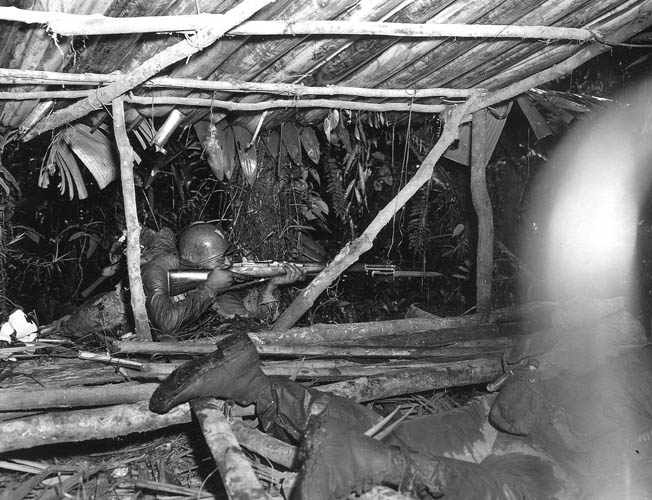
On November 13, 1943, the 2nd Battalion, 21st Marines moved beyond the crossroads to set up an outpost. Proper reconnaissance was not performed by the advancing Marines, who ran into a well-armed, reinforced, company-sized enemy detachment in a coconut grove with strong defensive fortifications. Due to the terrain, the Marine battalion’s companies lost contact with one another and with battalion headquarters.
Despite Marine dive bomber and artillery bombardment of the coconut grove the next morning, the Japanese were able to maintain their positions. Supported by M3 light tanks of the 3rd Tank Battalion, two Marine companies advanced in a frontal assault; however, accurate Japanese antitank fire ambushed the Marines and disrupted the attack.
By the end of the day, the Japanese retreated eastward on the East-West Trail. More than 40 Japanese bodies were found among some shattered fortifications; however, the Marines suffered about 60 casualties.
The 3rd Battalion, 21st Marines, along with the 148th and 129th Infantry Regiments, 37th Division, expanded the perimeter by about 1,000 to 1,500 yards along the center and left while the swamp at the right side was maintained by the 9th Marines. Unfortunately, Japanese air attacks caused significant casualties among reinforcements offshore as well as within the perimeter on November 17.
Marine General Geiger, now in command of IMAC, wanted to expand the perimeter further by clearing enemy roadblocks on the Numa Numa Trail paralleling the Piva River’s West Branch and the East-West Trail where it comes into proximity with the former trail and a tributary of the Piva River’s East Branch. Geiger also wanted to seize some of the high ground northeast of the Torokina beaches. These attacks on the trails’ roadblocks were successfully launched by the 2nd and 3rd Battalions, 3rd Marines on November 19-20.
Fierce fighting ensued when a 2nd Battalion company was ordered to seize a 400 to 500 foot ridge just north of the East-West Trail overlooking the Piva River branches on November 21, with the Japanese trying to retake the ridge. After three days of Japanese suicide charges, the ridge remained in the 3rd Marines’ hands, extending the perimeter to the northeast.
Also on November 21, other Marine units crossed the Piva River and headed east for roughly 1,000 yards until they ran into an impenetrable swamp. The 129th Regiment, moving on the far left of the perimeter, was able to advance 1,000 yards to the northwest with no opposition.
Three days later, an extensive preliminary Marine and Army artillery and mortar barrage was unleashed to allow the 3rd Marines to advance in the direction of Eagle Creek and the Torokina River to the east of the Piva River branches. Here the 3rd Marines overcame determined Japanese opposition in defensive fortifications.
The Marines advanced almost a mile beyond their intended objective before bogging down in swampland. During this combat, the Marines incurred more than 100 casualties, while the Japanese left tenfold more dead on the shell-pocked battlefield.
The mission to seize Torokina gained momentum on November 26 when construction began on a bomber airfield, known as Piva Uncle, and a second fighter strip, Piva Yoke, both of which enabled aircraft flying from the Central Solomon airfields to stage their missions to neutralize Rabaul. The coastal fighter airstrip, which the Seabees began constructing on November 10, was finished on December 10.
To protect the airfields from shelling, other topographic features that required seizure were Hill 1000, just to the north of the East-West Trail and Hills 500 and 600 astride Eagle Creek. These were occupied on November 27 and December 6, respectively.
The fighting was not yet finished. On December 7, two years after Pearl Harbor, elements of the Marines’ 1st Parachute Regiment slowly attempted to occupy a spur adjoining Hill 1000, only to be beaten back by a reinforced company from the Japanese 23rd Infantry Regiment.
After 11 days of savage struggle for what would become known as “Hellzapoppin Ridge,” elements of the 21st Marines finally took this slope. On December 21, other elements of the 21st Marines drove the enemy off Hill 600A, which was also near the Torokina River. But the foe doggedly counterattacked, necessitating three more days of hard combat before the Japanese were finally pushed off the hill and into the jungle.
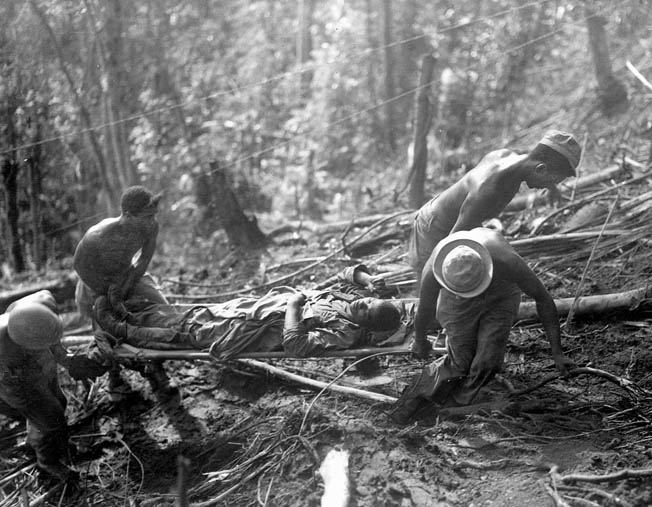
The Americans’ actions to secure the limited heights above Bougainville’s jungle floor ended the combat mission for the Marines on Bougainville, which, with the support of the 37th Infantry Division, had penetrated this northern Solomon island’s jungle more than 22,000 yards from the narrow beaches stormed more than seven weeks earlier.
General Geiger’s IMAC command was replaced by Maj. Gen. Oscar W. Griswold, now commanding the U.S. Army’s XIVth Corps. The Americal (23rd) Division, under the command of Maj. Gen. John R. Hodge, replaced most of the 3rd Marine Division, the latter unit departing Bougainville on Christmas Day after having suffered more than 400 killed and 1,400 wounded.
The 9th and 21st Marines left the island on December 28, 1943, and January 9, 1944, respectively.
Hyakutake’s forces had 2,500 dead accounted for on the battlefield; only 25 of the Japanese enemy had been captured—a testament to the suicidal tenacity of the Japanese Bushido code.
General Hyakutake underestimated the strength of the opposing American forces, believing that there were only 20,000 U.S. Army troops at Torokina. Before his defeat, he had planned to unleash an all-out counterattack on the U.S. Army XIVth Corps in early March 1944—primarily with the IJA 6th Division and other elements of the 17th Army.
Hyakutake did amass some 15,000-19,000 infantrymen with supporting artillery; the latter included 75mm pack howitzers and 105mm and 150mm guns, which were hauled onto ridges dominating the perimeter. However, he chose to retain the remaining 18,000 troops of the 17th Army to defend his bases at Buka and Buin.
The term “perimeter” for the XIV Corps’ 23,000-yard defensive zone underestimates how it bristled with mortar pits, pillboxes, trenches, and rifle pits with clear fields of fire and reserve positions in depth. The XIV Corps’ array of artillery was also impressive, with preregistered 75mm pack howitzer companies along with 105mm and 155mm howitzer battalions and 150mm “Long Tom” cannons and 90mm antiaircraft batteries to rain high-explosive shells on Japanese areas.
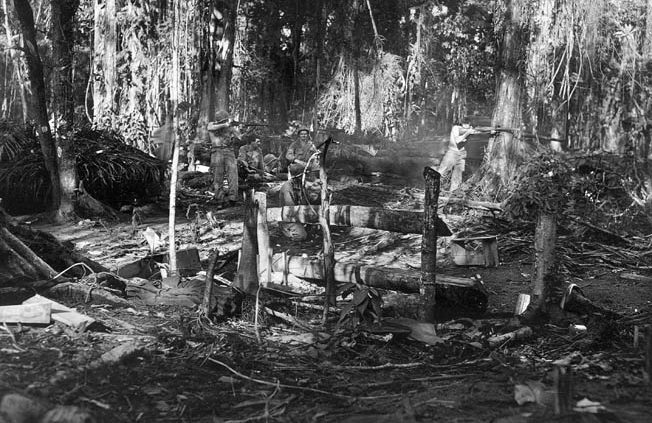
From the perimeter’s left, south of the Laruma River, to its right, just astride the Torokina River, the XIV Corps’ regiments were arrayed as follows: 148th, 129th, and 145th of the 37th Division moving onto the 164th, 182nd, and 132nd of the Americal Division. The fighter strip was on the beach at Cape Torokina within the Americal Division’s zone, while Piva Yoke and Piva Uncle were in the 37th Division’s half.
For his March 7 counterattack, Lt. Gen. Kanda, commander of the 12,000-man 6th Division, decided to organize his troops into three separate units, each one named for its commander—Iwasa, Muda, and Magata. The Japanese infantrymen took into battle with them just two weeks of rations since it was believed that the Americans would be defeated within that time frame.
After Japanese infiltrators began cutting the bands of American concertina wire on March 7, 1944, a massive enemy artillery bombardment erupted at dawn the following day targeting the Piva airfields and necessitating evacuation of the Allied aircraft to Munda on New Georgia. The Americans responded with intense and accurate counter battery fire on the Japanese howitzer positions.
Japanese infantry under Maj. Gen. Shun Iwasa (the Iwasa Unit) began the attack first after midnight on March 9, heading southward toward the center of the perimeter to scale the steep slopes of Hill 700. This force numbered more than 4,000 troops, elements of the 23rd and 13th Infantry Regiments. Its mission, after penetrating the 145th Infantry Regiment’s area, was to seize the two airfields, Piva Yoke and Piva Uncle. Small units of Japanese infantry were able to blast through the wire with bangalore torpedoes, seizing several American pillboxes during the early morning hours and creating a 150-yardwide penetration to which the 37th Division’s commanding general, Beightler, rapidly responded.
Companies from the division’s reserve, the 1st Battalion, 145th Infantry Regiment, eventually reoccupied most of the pillboxes. On March 10, after bitter combat, further American counterattacks by the 1st and 2nd Battalions, 145th Infantry Regiment reduced the enemy salient considerably.
As dawn broke on March 11, Iwasa launched a futile, hour-long, battalion-sized banzai charge up Hill 700’s steep slope. It suffered horrific casualties largely due to 37mm canister fire into their massed formation. Iwasa withdrew his battered force two miles from the battlefield on March 12, after the 2nd Battalion, 148th Infantry Regiment eliminated the entire enemy salient and recovered information on Japanese troop dispositions and plans for the entire counteroffensive from the corpse of a Japanese officer.
On March 10, Colonel Toyoharei Muda’s unit of more than 1,300 infantrymen from the remainder of the 13th Infantry Regiment, plus engineers, was assigned to attack Hill 260 in front of the American 182nd Infantry Regiment. The Japanese commanders had planned that once the XIV Corps perimeter was penetrated the Muda Unit was to serve as the larger Iwasa Unit’s left flank protection.
The Japanese sent two companies of their 13th Infantry Regiment onto the South Knob of the hill, capturing an observation post—a 150-foot banyan tree—from 80 Americans of an artillery observation unit. The GIs fled to the North Knob.
For two days, elements of the 182nd Infantry Regiment tried to regain the South Knob, but to no avail. On March 12, called “Bloody Sunday” by the Americal Division, elements of the 182nd Infantry unsuccessfully assaulted the Japanese positions on the South Knob from the west and northwest.
Three days later, Griswold, realizing that the enemy could not threaten his perimeter in their current strength, broke off the attacks. The banyan tree observation post finally fell to American artillery fire on March 17.
Hyakutake’s complex plan envisioned that XIV Corps would commit its reserves to perimeter penetrations by both the Iwasa and Muda Units on March 9 and 10, respectively. However, with foreknowledge of the Japanese plan, Beightler avoided depletion of his troop strength from the next intended Japanese attack point on the American perimeter. Awareness of the Japanese artillery dispositions from the captured documents greatly aided the accuracy of XIV Corps’ own artillery fire.
At dawn on March 12, the 4,300-man Magata Unit, named after its commander Colonel Isashi Magata, would attack. Composed mostly of infantrymen from the reinforced IJA 45th Infantry Regiment and supported by artillery and mortar barrages, the Magata Unit would be hurled down a logging trail that paralleled the Numa Numa Trail. It would hit the low ground in the 129th Infantry Regiment’s sector of the perimeter west of Hill 700.
Hyakutake’s plan then called for the convergence of the Iwasa and Magata Units, after their respective breakthroughs, to capture the two Piva airfields. Then, all three units were to combine and drive south to the coastal fighter strip.
The Magata Unit attacked along a 100-yard front against the 2nd Battalion, 129th Infantry Regiment. The Japanese broke through an initial defense line and took some American pillboxes before a counterattack by C and G Companies of the 1st Battalion, 129th, acting as a reserve, reclaimed a few of the positions and stopped another enemy assault later that day.
At dawn on March 13, the Japanese struck again, but Beightler personally responded with Sherman tanks from XIV Corps reserve and, along with his infantry, restored his original lines. Predawn Japanese attacks on both March 15 and March 17 made modest inroads into the 37th Division’s perimeter but were inconclusive.
After a four-day lull in Japanese assaults from March 18-22, Magata put together a force of almost 5,000 infantrymen by amalgamating elements of the Iwasa and Muda Units to replace his own 45th Regiment’s casualties.
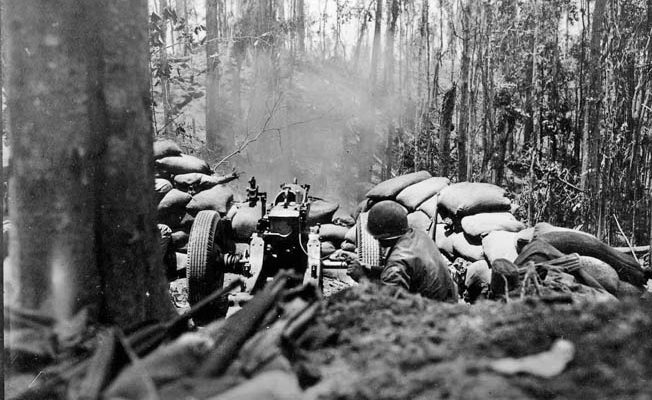
Mugata then mounted an attack late on March 23 against the 129th Infantry Regiment’s perimeter sector where Cox Creek abuts it. The Americans were again forewarned after intercepting a wireless communication from 17th Army Headquarters to Tokyo pinpointing the time and place of the attack.
After a small Japanese penetration near the 2nd Battalion, 129th Infantry Regiment’s command post, Beightler counterattacked on the morning of March 24 with infantry, tanks, and antitank guns. By noon, the enemy salient was reduced. As the Japanese retreated, XIV Corps artillery rained down almost 15,000 rounds on enemy troop concentrations.
The Japanese counteroffensive was defeated. Hyakutake received permission from General Hitoshi Imamura, commanding general, IJA 8th Area Army, to withdraw, and so the remnants of his army began their retreat on March 28, 1944. The Iwasa and Muda Units withdrew south to Buin, while Magata’s 1,500 survivors went north via the Numa Numa Trail.
Battlefield estimates listed the Japanese casualties at more than 8,500 killed and wounded during the 19-day enemy counteroffensive.
As a testimony to the Americans’ fortified positions, interior lines, and skilled direction of reserves, tanks, and artillery, the dead (263) among the XIV Corps casualties were much fewer than the enemy’s.
Without the National Guardsmen of the 37th and Americal Divisions in this largely forgotten northern Solomon conflict, Admiral Morison wrote, “Kanda’s [6th IJA Division] forces could have captured the Perimeter and the Torokina airdrome, wiping out the gains of the Bougainville campaign and raising new hopes at Rabaul.”
The once mighty 17th Army would be isolated and have to resort to planting crops and gardens for subsistence, while the American forces, within a slightly enlarged perimeter, simply patrolled aggressively and contained them in a “vast jungle prison camp.”
Additionally, three airfields were constructed within the perimeter, and these bases eventually contributed mightily to Operation Cartwheel’s removal of Rabaul as a strategic factor in future operations in the South Pacific.
Admiral Halsey, in saluting his forces, stated, “You have literally succeeded in setting up and opening for business a shop in the Japs’ front yard.”
As time passed, the battles for Bougain-ville unfortunately receded in memory. But Bougainville enabled a strong perimeter to be established and courageously defended by both Marines and soldiers from suicidal Japanese infantry assaults.
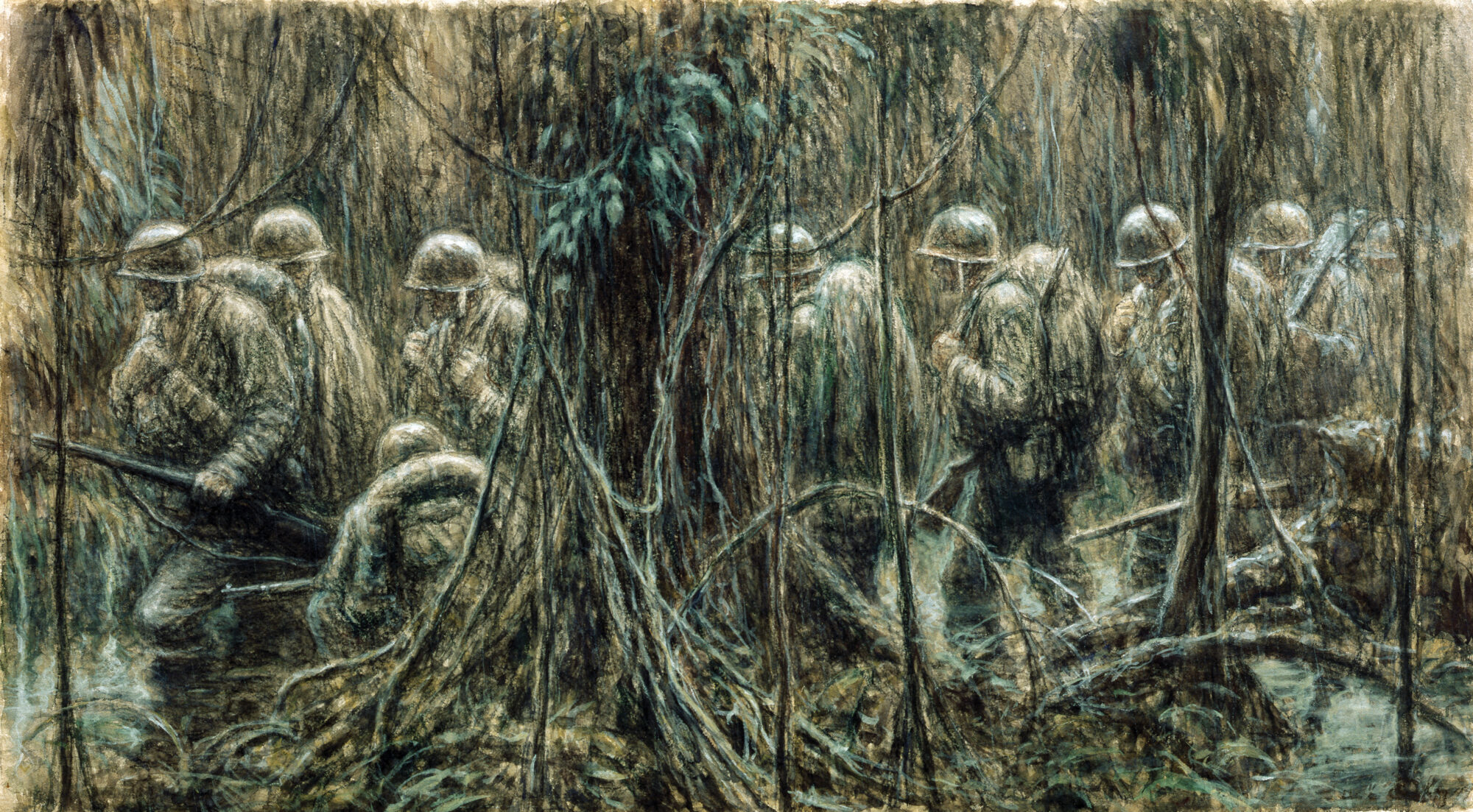
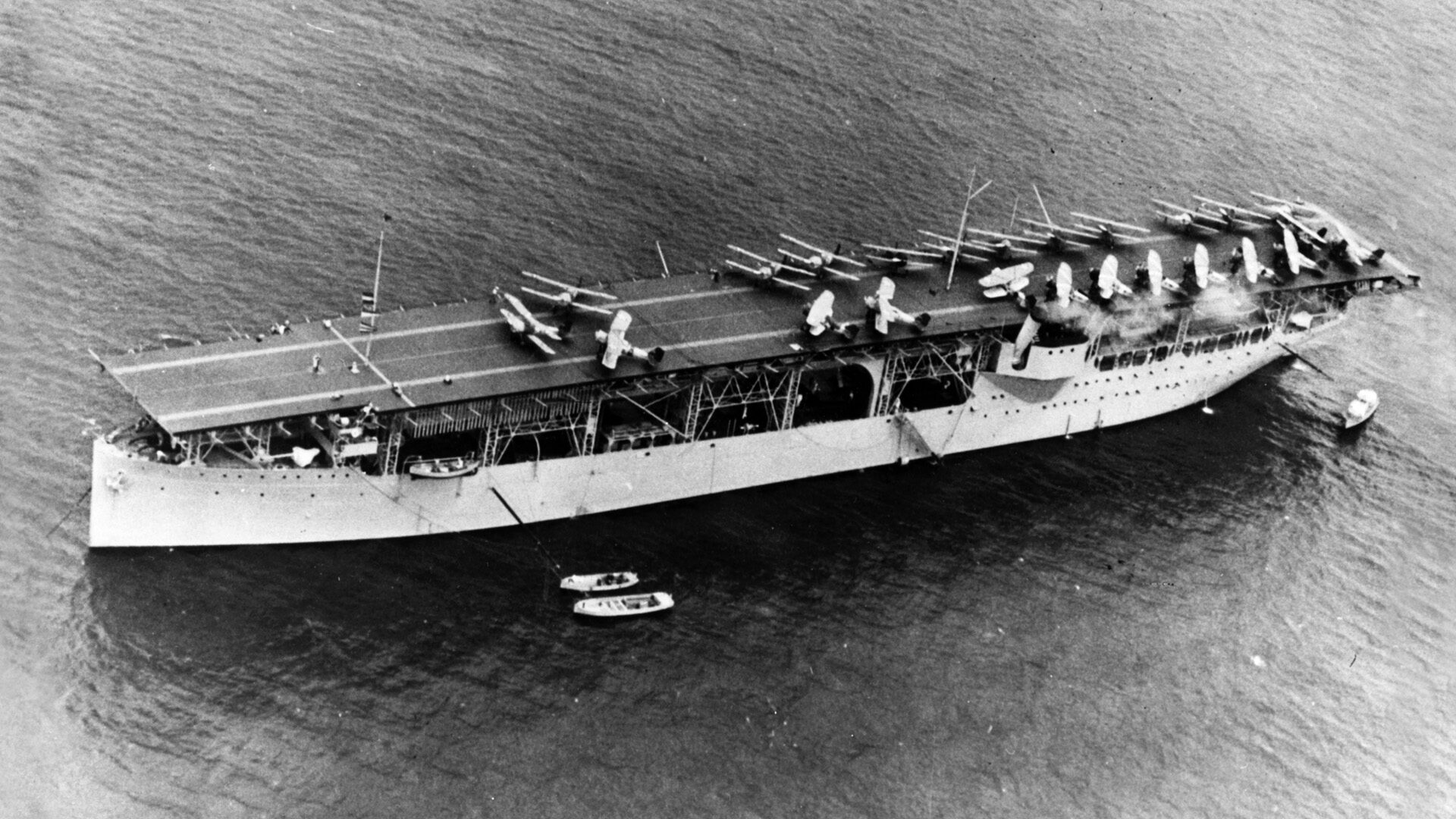
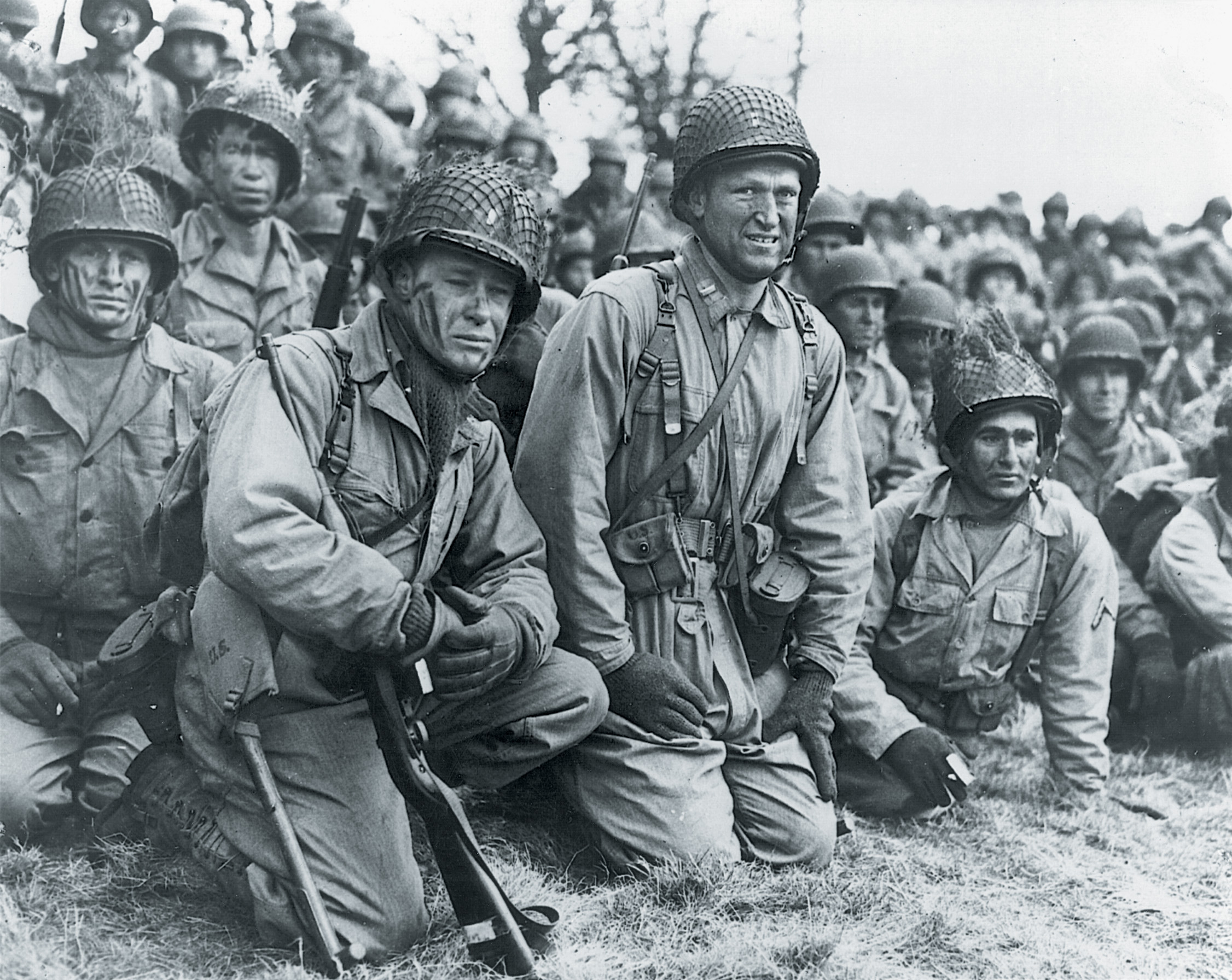
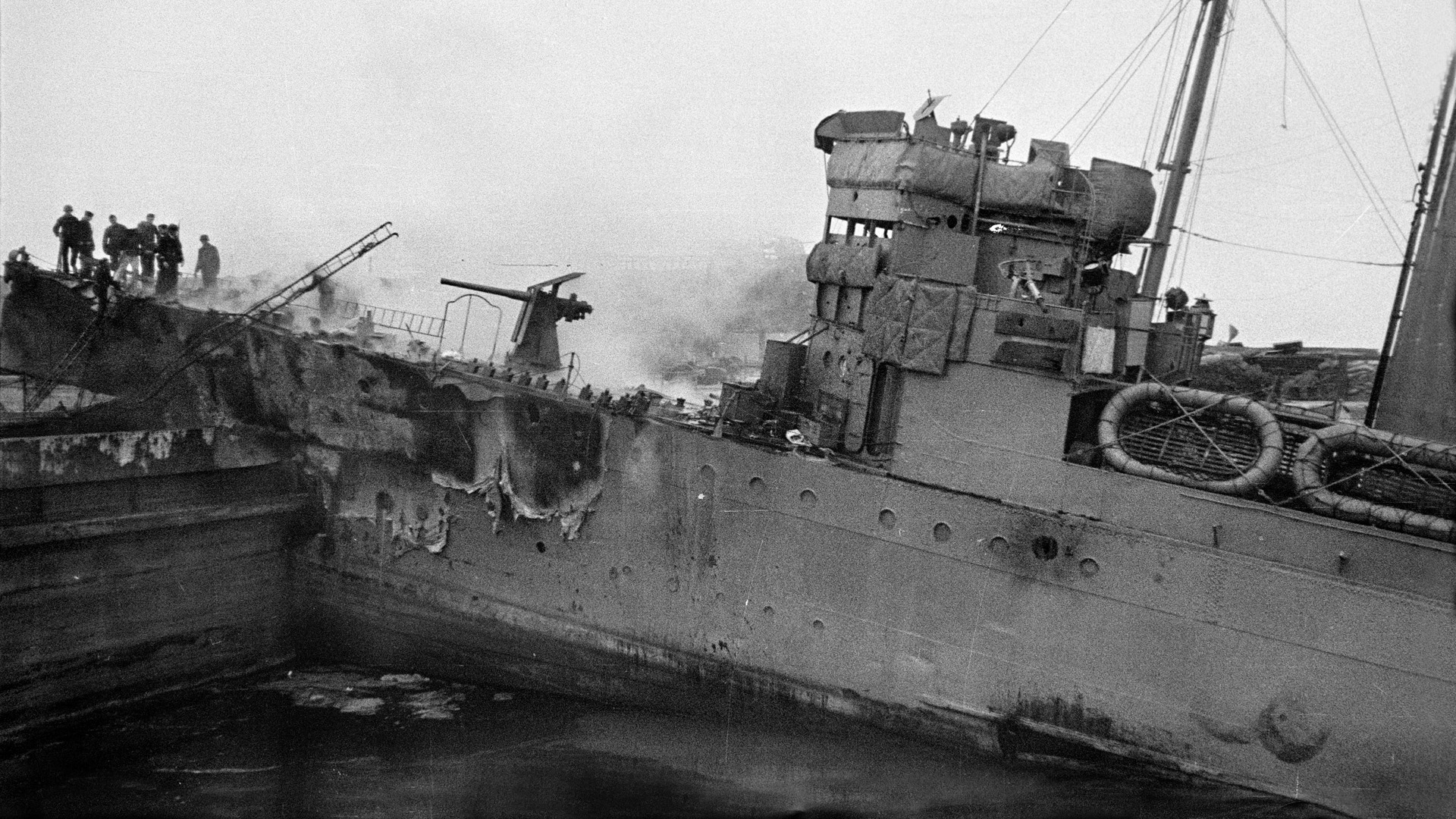

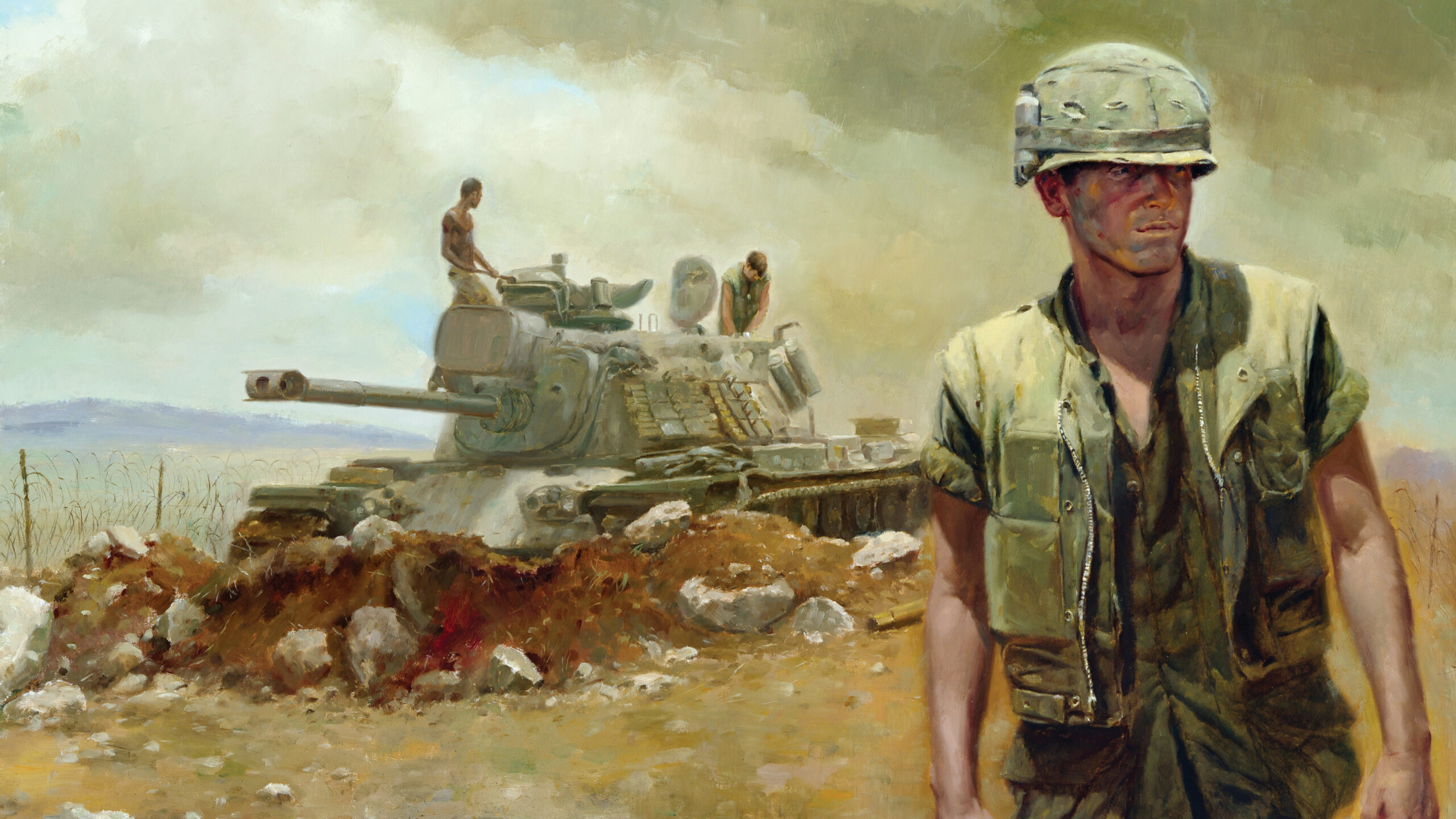
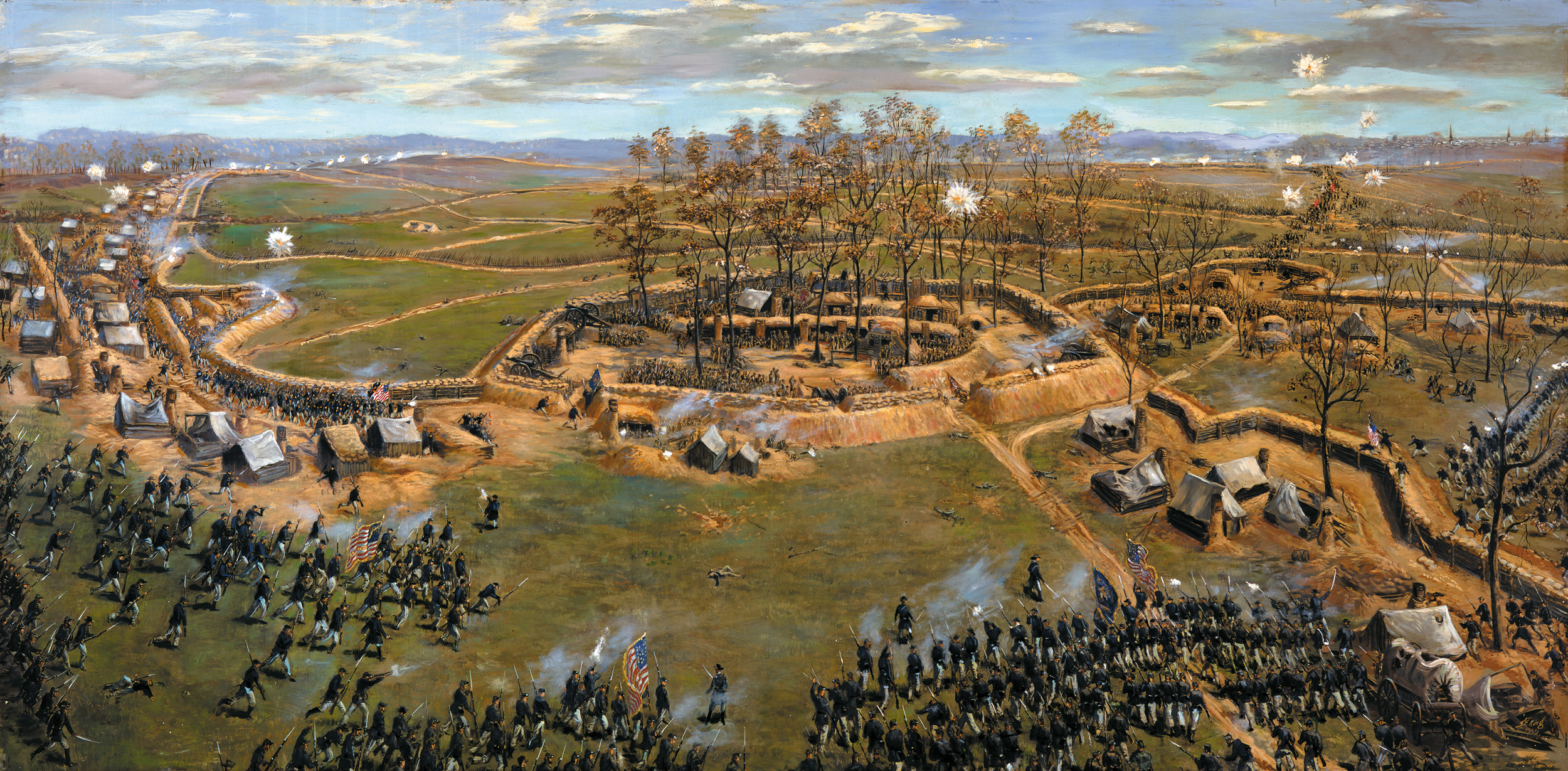
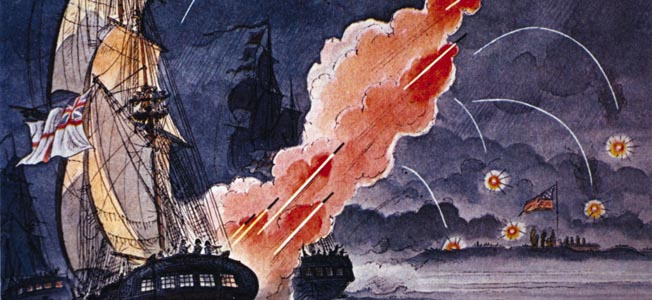
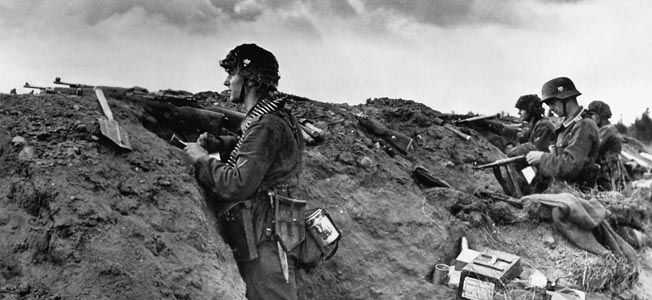
Join The Conversation
Comments
View All Comments